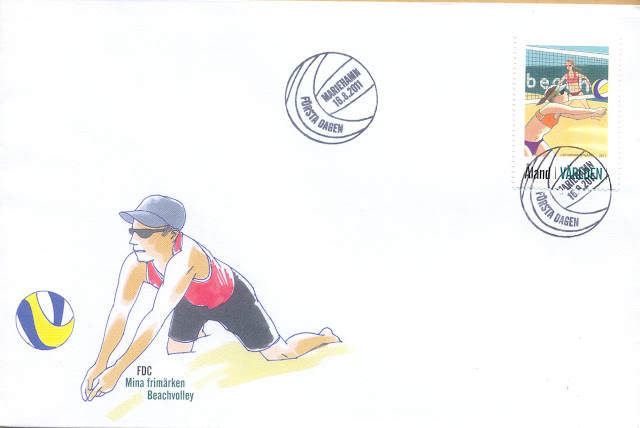
The displayed FDC dated 12.9.1973 has stamps on the cover, which are Anti tuberculosis fund raising stamps. Which means that part of the revenue obtained from the sale of these stamps was used towards prevention of tuberculosis, especially in children. The paintings on these stamps are by Hugo Simberg, Vilho Sjostrom and Juho Rissanen respectively. My dear friend Ella sent me this pretty FDC.
Painters Simberg and Juho Rissanen are well known for most of Finnish people. But, Sjöström is familiar to only those who are interested in art. All these three Finnish artist were born in 1873, thus 1973 was the 100th anniversary of their birth. This cover and the stamps were issued to commemorate that very event.
Hugo Simberg (1873-1917) was a symbolist painter and graphic artist. He was born at Hamina. In 1891, at the age of 18, he enrolled at the Drawing School of the Viipuri Friends of Art, and also studied at the Drawing School of the Finnish Art Association. In 1895 he became the private pupil of Akseli Gallen-Kallela. Simberg studied with Gallen for three periods. In 1896 Simberg went to London, and in 1897 to Paris and Italy. During these years he exhibited several works at the Finnish Artists' autumn exhibitions, including 'Autumn', 'Frost' and 'The Devil Playing Music'. Critical success led to his being made a member of the Finnish Art Association, and to his being appointed to teach at the Drawing School of the Viipuri Friends of Art. In 1904 he was commissioned to decorate the interior of Saint John's church in Tampere (now Tampere cathedral), a project which he carried out with Magnus Enckell between 1904 and 1906. He died at Ähtäri in 1917. The two characters Simberg used most frequently for his art are the "Poor Devil" and Death personified. Simberg's paintings emphasize topics macabre or supernatural. A good example of this is his painting Kuolema kuuntelee ("Death Listens"). Simberg's famous painting The Wounded Angel, too, is somewhat gloomy, its titular character appearing in the shape of a winged angel with a bandaged head, borne on a stretcher by two somberly dressed boys, one of whom looks toward the viewer with a serious expression. The painting is the best known of the artist's works and is especially famous in Finland. The painting on the stamp is A girl and a lamb. This painting is realistic in style.
Wilho Sjöström (1873-1944) was a Finnish painter and professor. He had many positions of trust and because of this he was an opinion-leader. Sjöström studied from 1891 to 1893 at the Drawing School of the Finnish Art Association like Simberg. He also was a pupil of Akseli Gallen-Kallela. He studied in Paris, Copenhagen, Florence, Rome and London.
Sjöström paited in realistic style. He painted landscapes mainly, especially flowing waters, lakes and rivers. He also painted many portraits, for example a portrait of Carl Gustaf Emil Mannerheim. The painting on the stamp is ‘Summer evening’.
Juho Rissanen (1873-1950) was born in Kuopio and he died in Miami, Florida. His family was a working-class family. Rissanen was one of the first Finnish painters whose parents were from working class. Rissanen painted ordinary country folk and ordinary Finns at work. When Rissanen was ten years old, his father got lost on the ice in winter; he was drunk and froze to death. This was a traumatic experience for a young boy. Rissanen has painted many paintings about this. Rissanen emigrated from Finland in 1918 to Denmark. Later he moved to France and then to the United States. The stamp on the FDC is ’Mountain spring’ painted in 1903.































